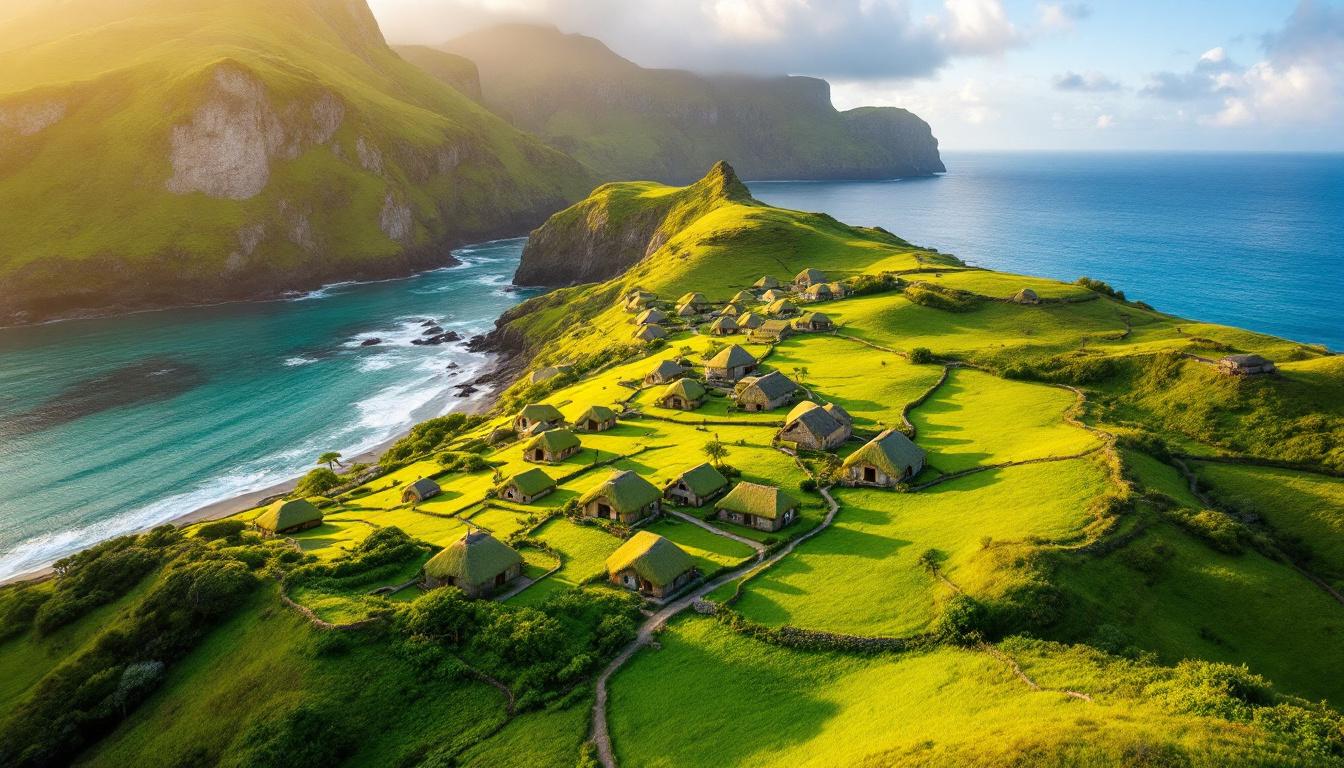While millions chase overcrowded Philippine beaches, there’s one remote island province that achieved something extraordinary: becoming the only Philippine destination ever accepted into the UNWTO’s global network of sustainable tourism observatories. Batanes, home to just 18,831 Indigenous Ivatans, maintains perfect 75°F temperatures when mainland Philippines swelters through monsoon season.
This northernmost archipelago didn’t stumble into exclusivity. The Ivatan community deliberately reduced tourist numbers from 50,000 to just 13,000 annually, proving that authentic cultural preservation creates more valuable travel experiences than mass tourism ever could.
What makes Batanes irreplaceable isn’t just its recognition—it’s how the Ivatan people transformed tourism into a protective force for their heritage while offering travelers something genuinely transformative.
The exclusive UNWTO recognition that changed everything
Global sustainability leadership only Batanes achieved
On June 16, 2023, Batanes became the sole Philippine member of UNWTO’s International Network of Sustainable Tourism Observatories—joining just 37 other destinations worldwide. This isn’t tourism marketing; it’s scientific recognition of how Indigenous communities can lead global sustainability efforts.
The Ivatan monitoring system that impressed international experts
The Batanes Tourism Hospitality Monitoring Center operates as a multidisciplinary research partnership between UP Diliman and Ivatan knowledge keepers. Indigenous residents provide “a wealth of information on pressing sustainability challenges,” creating the evidence-based framework that earned global recognition.
Perfect weather advantage when Philippines faces monsoon chaos
Natural climate control at 75°F during peak storm season
While August brings flooding to Manila and typhoon warnings across the Philippines, Batanes’ northern latitude and elevated terrain create consistently comfortable temperatures around 75°F. The rolling hills act as natural air conditioning, making August the secret perfect timing for exploration.
Traditional architecture designed for climate mastery
Ivatan Sinadumparan stone houses weren’t built for Instagram—they’re climate engineering masterpieces. Thick limestone walls, cogon grass roofs, and strategic positioning create naturally cool interiors during hot months while withstanding Category 5 typhoons that devastate other regions.
Cultural preservation that puts community first
The deliberate tourism reduction strategy
“Batanes is so easy to destroy if it cannot institute proactive policies,” explains Ed Delfin of the Batanes Tour Guides Association. Flight costs above P12,000 one-way naturally regulate visitor numbers, proving that “low-volume, high-value tourism” protects both culture and livelihoods better than mass arrivals.
Authentic Ivatan experiences beyond Instagram appeal
DOT-accredited Ivatan guides don’t just show locations—they share centuries of cultural knowledge about traditional fishing, cogon grass harvesting, and typhoon survival wisdom. The Department of Tourism specifically recommends hiring local guides “to gain deeper insight into Ivatan culture” rather than superficial sightseeing.
Why this model succeeds where other destinations fail
Community control over carrying capacity decisions
Unlike destinations where tourism boards set visitor limits, Ivatan communities determine their own carrying capacity through the BTHMC framework. This community-led approach has successfully maintained cultural authenticity while creating sustainable economic benefits for all residents.
The ripple effect inspiring global sustainable tourism
Batanes’ success demonstrates that Indigenous knowledge systems can lead international sustainability standards. The INSTO framework now includes Ivatan methodologies as best practices for other destinations seeking authentic community-based tourism models worldwide.
Batanes proves that exclusivity isn’t about limiting access—it’s about respecting the profound wisdom of Indigenous communities who understand true sustainability. The Ivatan people haven’t just preserved their culture; they’ve created a global model for how tourism can strengthen rather than exploit local communities.
Experience the only Philippine destination trusted by the United Nations to lead global sustainable tourism. Book through DOT-accredited Ivatan guides who ensure your visit supports rather than threatens this precious cultural heritage. For weather planning, check our Asia-Pacific climate guide and discover more protected Philippine destinations following Batanes’ sustainable model.
Essential planning for respectful Batanes travel
How do I support Ivatan communities during my visit?
Hire DOT-accredited local guides, stay in community-owned accommodations, and purchase authentic crafts directly from artisans. Avoid unauthorized photography of private homes and respect traditional fishing areas during active seasons.
What’s the best time to experience perfect 75°F weather?
August through October offers ideal temperatures with reduced typhoon risk. Book flights early as only 2-3 daily flights serve Basco Airport, and advance booking supports the community’s tourism planning.
Why are flights to Batanes so expensive?
The P12,000+ airfare isn’t gouging—it’s the natural result of limited flights, small aircraft, and the community’s commitment to low-volume tourism. This pricing structure ensures tourism revenue directly benefits Ivatan families rather than external operators.
How does Batanes compare to other sustainable destinations?
Unlike many eco-tourism destinations that impose external sustainability measures, Batanes developed its framework through Indigenous Ivatan knowledge systems. This community-led approach earned UNWTO recognition as a global best practice model.
